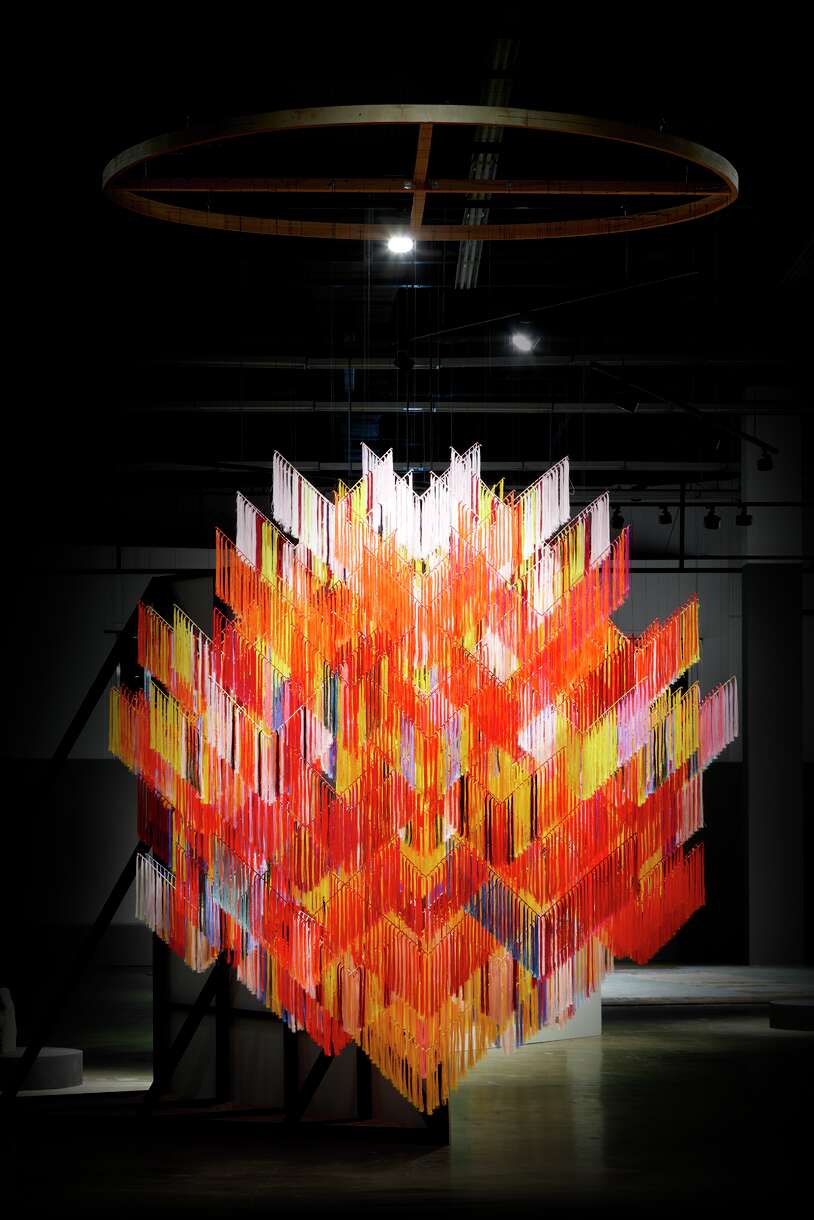
Outi Pieski, Beavvit II, 2021. © Outi Pieski/Bildupphovsrätt 2025
Beavvit II, 2021
Outi Pieski
Objects and Sculpture Conservator My Bundgaard on how to preserve, store, and install an artwork composed of 54 sections of fringes.
Runtime: 02:21
My Bundgaard: My name is My Bundgaard, and I am the conservator of objects and installation art here at Moderna Museet. My role is to safeguard the sculptures and installation art that form part of our collection – and today I want to tell you about Outi Pieski’s Beavvit II.
The work consists of vibrant fringes, suspended from V-shaped metal brackets, together forming a sphere. It may appear simple – but one misplaced element, and the entire structure loses its shape. As a conservator, I need to document and number each part, and create a detailed manual with both text and images, so the work can always be reinstalled correctly.
The piece is made up of 161 brackets with fringes, organised into 54 sections, some up to two and a half metres long. In storage, they hang in the exact order in which they are to be installed – Otherwise, the fringes would easily become tangled and this is also to minimize handling of them during the installation.
The material is polyester – in other words, plastic. We therefore treat it not as textile, but as plastic, with its own factors of degradation. We don’t know exactly how this type of colored plastic fades and breaks down, In theory, we could run an “accelerated aging test” – exposing the material to intense light in the lab to simulate for instance 50 years of degradation – but that would be a research project in itself and it hasn’t been done on this artwork. Instead, we keep the light levels low to prevent damage.
And yes, the fringes gather dust, just like an old lampshade at home. Cleaning them while they hang as a sphere is impossible, so we blow gently, layer by layer. Time-consuming, but necessary.
Installing Beavvit II takes about two days, but the preparations – registration, documentation, and devising long-term solutions – have taken weeks.
For me, the most rewarding aspect is coming close to the artwork through its material and technique – understanding the artist’s intention in her expression, and creating documentation that ensures that the piece will live on in the museum’s collection far into the future.